Grand Dunand
Writer Leslie Gilbert Elman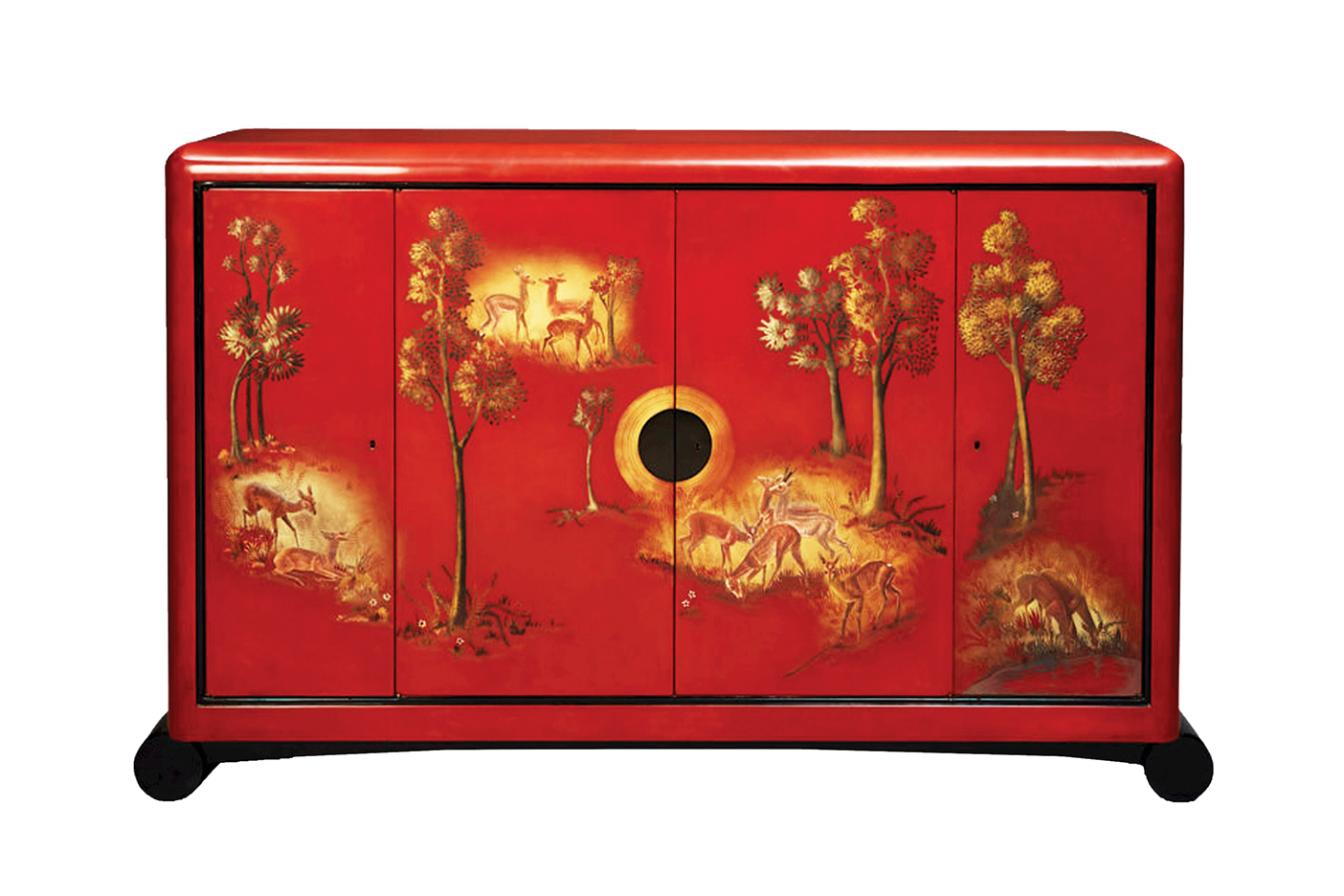
Decorated with deer in woodland scenes, this Asian-influenced red lacquer cabinet was made in 1937 and bears Jean Dunand’s signature. Courtesy of DeLorenzo Gallery.
The eternal elegance of Jean Dunand’s Art Deco designs
In 1912, decorative artist Jean Dunand and Japanese lacquer master Seizo Sugawara struck a deal. Sugawara had asked Dunand’s assistance in solving a dilemma involving metal inlay on lacquer. Dunand agreed to help, providing that Sugawara teach him the art of Japanese lacquer work. That agreement set Dunand on the path to becoming one of the prominent figures in French Art Deco design.
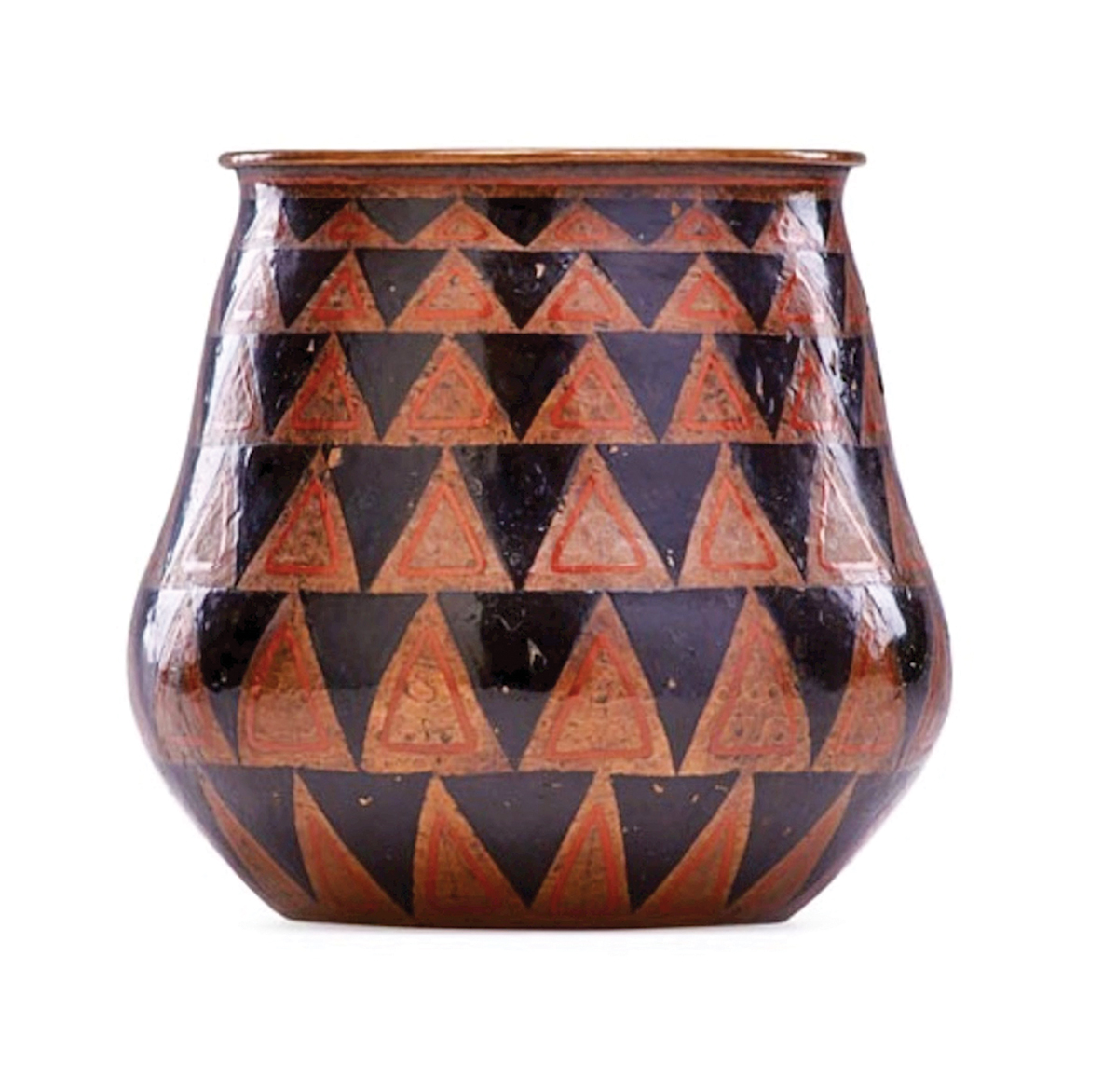
Also made around 1925, this lacquered copper vase combines traditional lacquer techniques with geometric Art Deco patterns. Courtesy of DeLorenzo Gallery.
Trained as a sculptor in Geneva, Dunand had moved to Paris immediately after receiving his degree in 1897. There, he apprenticed with sculptor Jean Dampt and worked on several high-profile projects, including sculptures for the Pont Alexandre III in Paris. In addition to sculpting, Dampt was designing decorative objects, jewelry and furniture. (His carved oak chiffonier with drawer handles shaped like mice is in the collection of the Musée d’Orsay in Paris.) He encouraged Dunand to do the same.
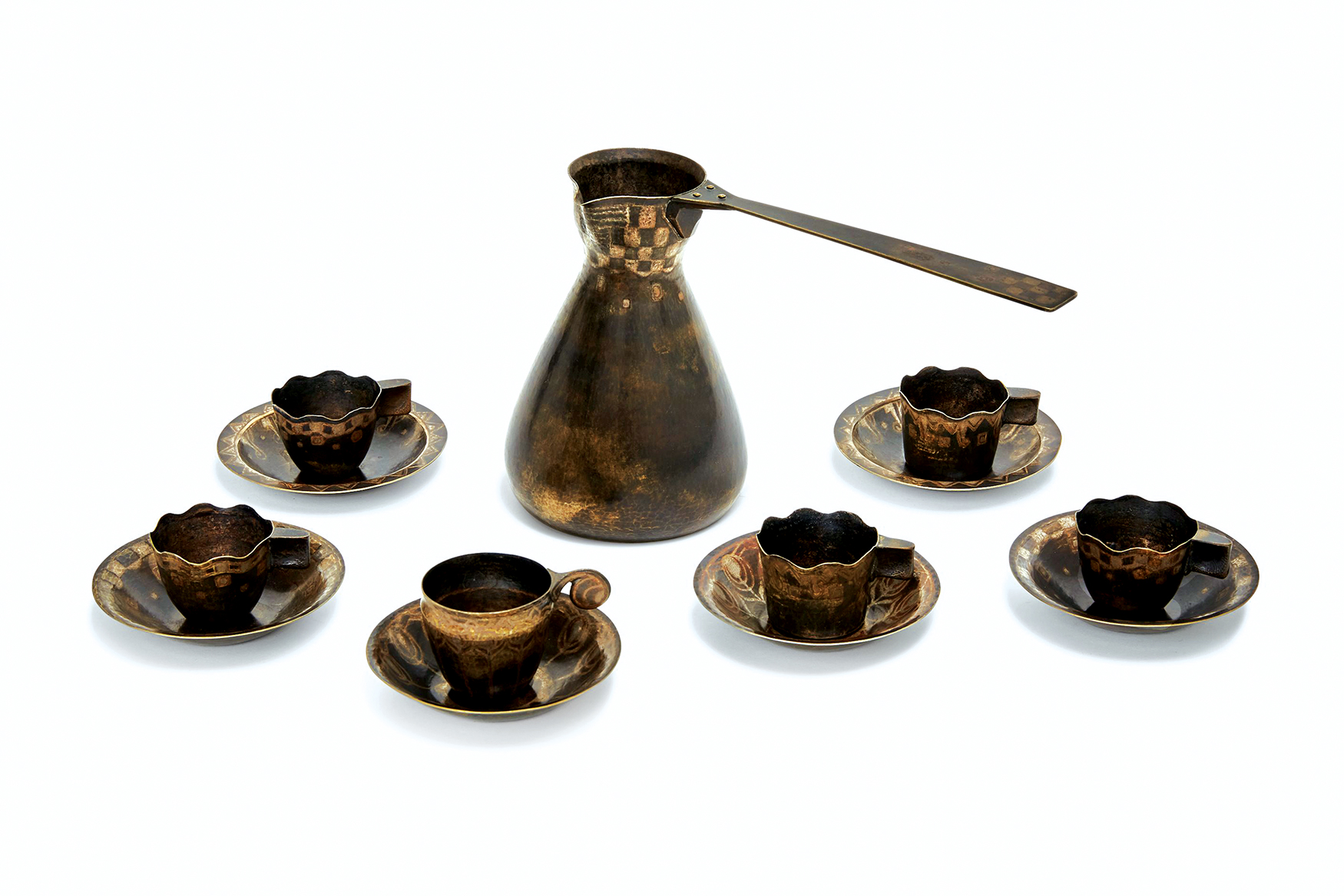
This dinanderie Turkish coffee set was made from nickel silver with a brown patina around 1912, before Dunand was working with lacquer. Courtesy of DeLorenzo Gallery.
Dunand was drawn to dinanderie, a type of hammered brass and copper metalwork named for Dinant, Belgium, where it originated during the Middle Ages. Originally used to make vessels and objects for churches, at the turn of the last century, dinanderie was revived and adapted for decorative objects such as vases and bowls.
From 1903 to 1906, Dunand collaborated with Dampt on interior decoration for the private home of the Countess de Béarn and eventually devoted himself full-time to decorative arts, winning awards and becoming part of the community of the sought-after artists and designers of the day, including Eileen Grey, who introduced him to Seizo Sugawara.
Dunand had just 12 “classes” with Sugawara, learning the basics and subtleties of the 30-step process to produce authentic Japanese lacquer work. Then he began working on his own to perfect his technique.
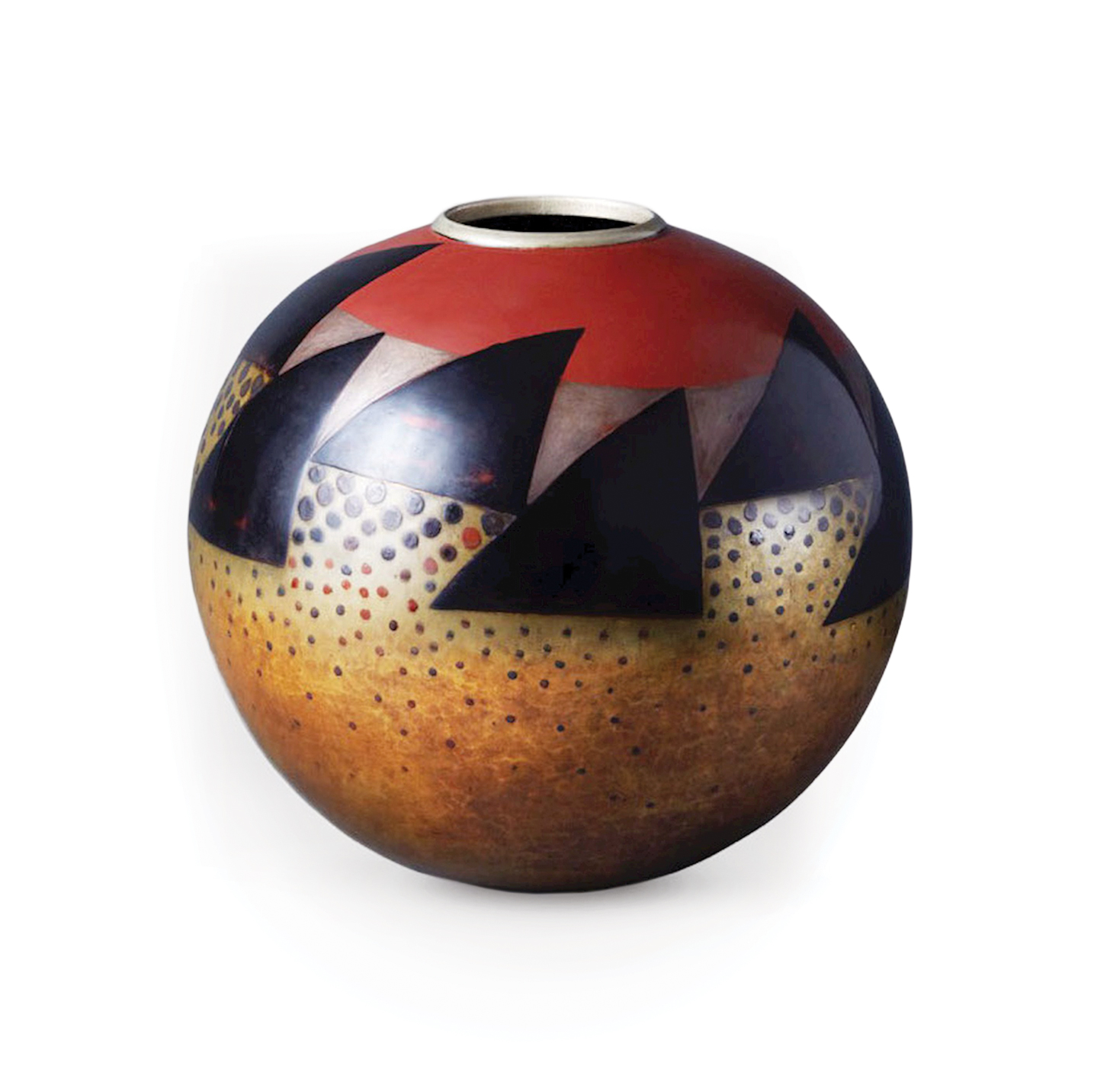
Spherical vases such as this one were a Dunand specialty. Decorated with triangles and dots in black, silver and red-brown lacquer, it was produced around 1925. Courtesy of DeLorenzo Gallery.
During World War I, he took time away from decorative arts to drive an ambulance for the Red Cross. He designed a new type of combat helmet with a retractable visor, and there’s even some evidence that he consulted with the French air force on using lacquer to prevent weathering of wood aircraft propellers.
After the war, Art Deco fashion firmly took hold, and Dunand opened a workshop and showroom at No. 72 Rue Hallé in Paris to keep up with demand for his work. There were exhibitions of his dinanderie throughout Europe. He designed furnishings for prominent clients, including San Francisco bon vivant Templeton Crocker and Solomon R. Guggenheim, some of which are now in the collection of the Metropolitan Museum of Art in New York City.
He made jewelry and accessories for Paris fashion designers such as Jeanne Lanvin and Elsa Schiaparelli and for celebrities such as Josephine Baker. In the United States, Lord & Taylor commissioned him for work to be sold at its New York flagship department store. He produced large lacquer and metal wall panels as well as lacquered furniture for public rooms on the luxury ocean liners Ile de France, L’Atlantique and Normandie. He did interior decoration for the French Pavilion at the 1939 New York World’s Fair, and he also found time to produce intricate lacquer book bindings and plates.
While staying true to the traditional lacquer process, he adapted it to the fashion of the day, bringing in new colors, motifs and applications to create his own style. His vases had modern, abstract, geometric patterns. The “Giraffe” necklaces that Josephine Baker famously wore (with little else) in a 1929 magazine photo had African influences. He added metals and pigments to the lacquer to create colors such as the gold he used for Templeton Crocker’s gold lacquer dining room set. One of his signature techniques was white inlay made from crushed eggshells that were placed into the lacquer piece by piece, curved side up or down depending on the desired effect. Though it was painstaking work, eggshell inlay was a technically efficient way to execute white designs in colored lacquer, and Dunand used it on everything from small objects to tabletops. He even raised his own chickens to produce eggs of the quality and color he needed for his work, and sometimes used duck, partridge and other bird eggs for contrast and shading.
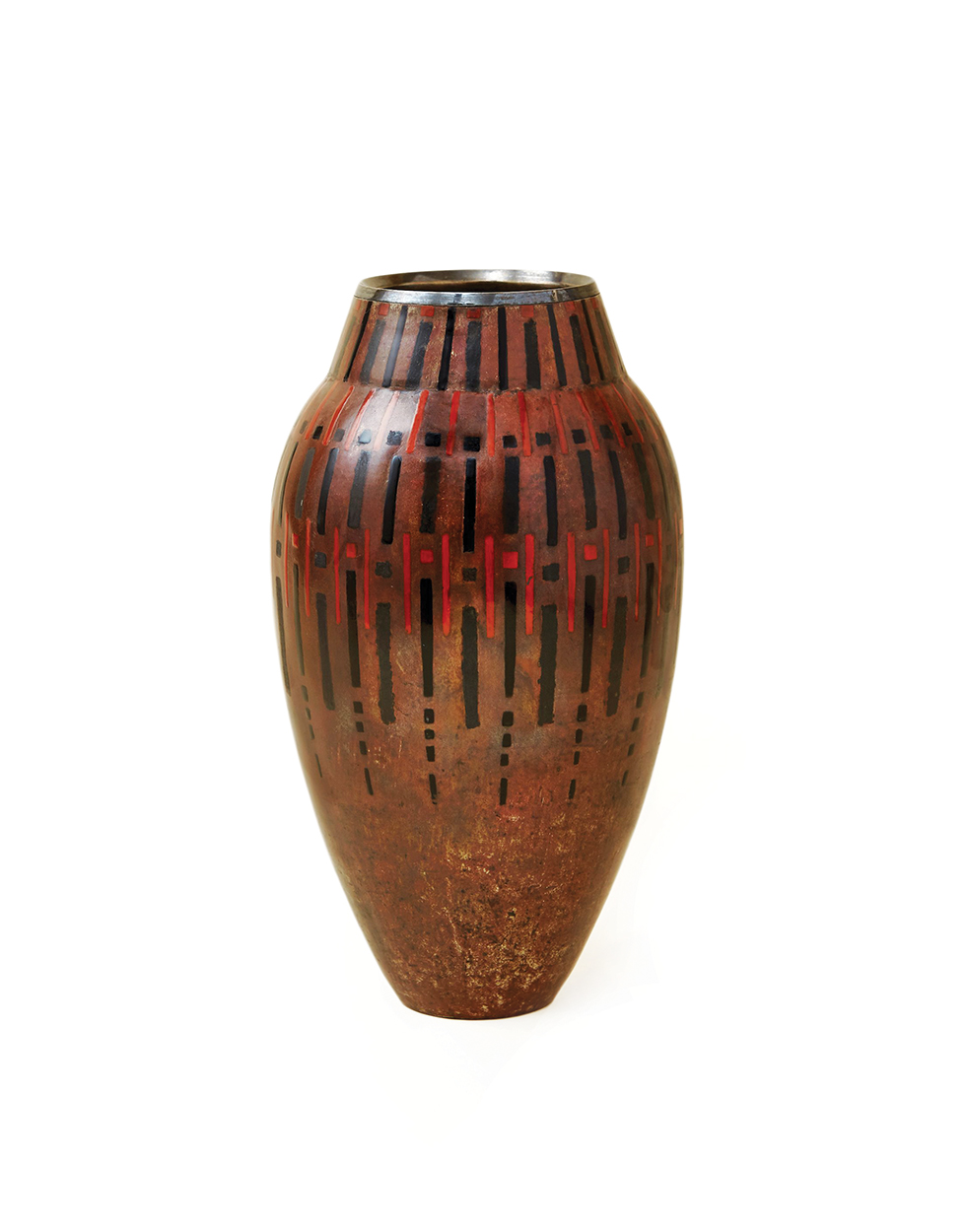
DeLorenzo Gallery in New York City, specialists in French Art Deco, recently offered for sale a number of objects by Jean Dunand, including this dinanderie vase made around 1930 and lacquered with red and black lines. Dunand’s name is stamped on the underside of the base. Courtesy of DeLorenzo Gallery.
Dunand the sculptor became Dunand the technician, so much so that he frequently collaborated with other sculptors, artists and designers to create the forms that he would decorate. He died in 1942, leaving a legacy of exquisite pieces in museums and private collections around the world. Boldly designed and brilliantly crafted, they are examples of why Art Deco will always be in fashion.
Leslie Gilbert Elman is the author of Weird But True: 200 Astounding, Outrageous and Totally Off the Wall Facts. She writes about antiques and other subjects for Design NJ.
